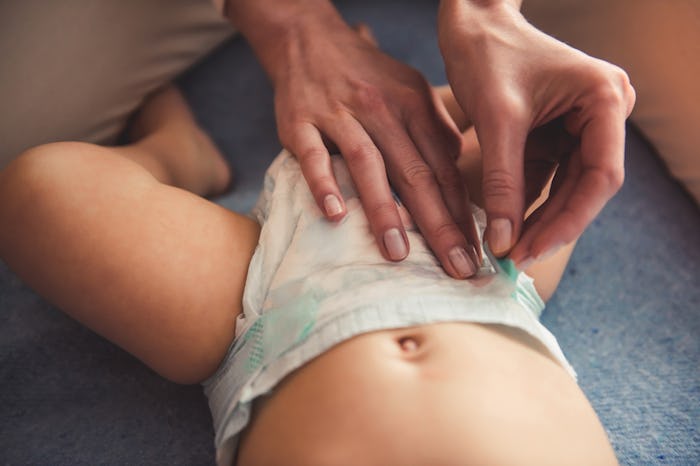News
Too Many Parents Are Silently Struggling To Afford Diapers
Living in the United States, it can be easy to assume that everyone around you is well-off and able to provide for themselves with ease. And yes, especially compared to other parts of the world, Americans certainly have it pretty good. However, that doesn't mean that Americans aren't without their fair share of struggles. A large number of citizens go without many basic necessities in order to provide for their families, and yet hardly anyone really talks about it. In fact, way too many parents are silently struggling to afford diapers, and there are a lot of reasons why.
The National Diaper Bank Network (NDBN), and the organization's founding sponsor, Huggies, have put together new information on the state of diaper need in the United States, and the findings are both staggering and crucial to understand. In fact, the new study found that one in three surveyed families — including parents and other household members — reported struggling with diaper need in 2017, with the "average household in need falling 19 diapers short each month."
To put it simply, according to the findings, 36 percent of households find it difficult to afford enough diapers each month — and that alone is a heartbreaking reality. However, there are many factors that go into families not being able to afford diapers, and they're all important to understand.
While many like to assume that anyone struggling to make ends meet simply must not be working hard enough, this new study proves that is a harmful misconception. According to the survey, here's a breakdown that proves why:
- Families in diaper need work 38 hours per week, on average
- 58 percent of these parents hold full-time jobs
- 9 percent are working part-time
- Less than half — 48 percent — of their employers offer medical insurance or paid time off, 46 percent
So clearly, the issue isn't that parents or guardians don't have jobs, although even if it were it wouldn't really matter. The issue still is that a lot of people can't afford diapers, and factors such as the wage gap, health insurance, and the minimum wage are all at play.
As noted in The Atlantic, "A year’s supply of diapers costs $936. That means a single mother mother working full time at the minimum wage can expect to spend 6 percent of her annual pay on" just diapers. But, for some households, that 6 percent is proving to be too much, and that makes sense. With the cost of housing in the United States steadily rising, and the threat of WIC, Medicaid, and CHIP cuts on the horizon, it's no wonder that so many households are struggling.
In fact, a 2013 study actually uncovered that "needing diapers and not being able to buy them was a leading cause of mental health problems among new moms," as The Atlantic observed. So while diaper need isn't discussed very often, it still has real and lasting consequences. Essentially, needing diapers also leads to increased health risks, including mental health, and attendance at work or school.
Furthermore, the study from Huggies also noted that "A gap in the federal social safety net contributes to the difficulties of paying for an adequate diaper supply as federal subsides do not cover diapers and baby wipes." The researchers concluded:
As the need for these essential supplies is evident, the study provides a meaningful picture of what contributes to diaper need and the impact it has on the well-being of children and families. And despite growing annual donations by the millions, the study reveals how many U.S. families remain underserved and continue to struggle with a basic need of all babies and toddlers.
While Sept. 25 through Oct. 1 may be the official Diaper Need Awareness Week, it's clear that there are a lot of families out there who need help. Donating to local diaper drives or banks is a great way to help out, although NDBN has other ways you can get involved as well.
Watch Romper's new video series, Romper's Doula Diaries:
Check out the entire Romper's Doula Diaries series and other videos on Facebook and the Bustle app across Apple TV, Roku, and Amazon Fire TV.
